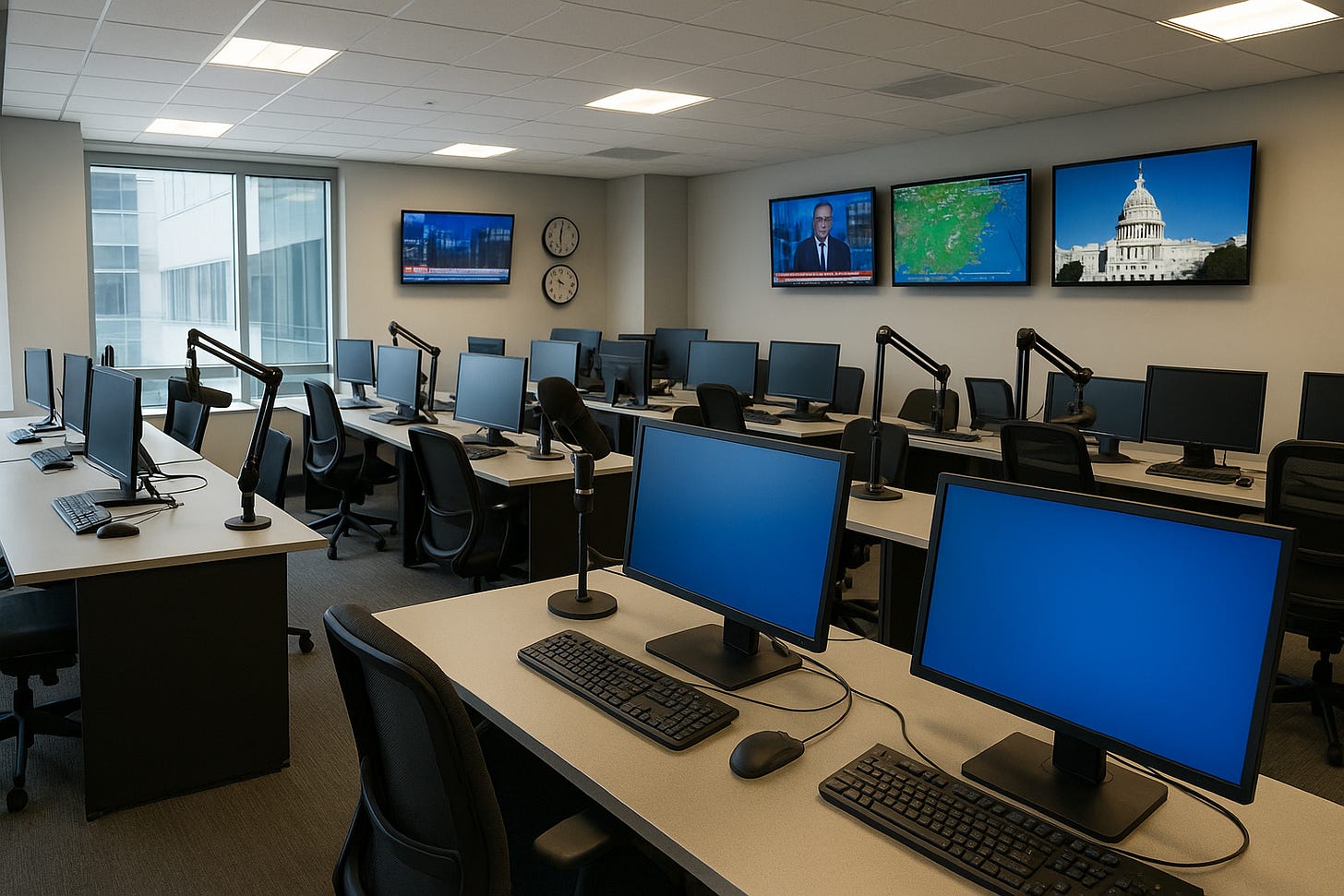Running on Fumes
Short-staffed radio newsrooms are bad news for listeners
The newest RTDNA/Syracuse University survey has a blunt finding: the typical U.S. radio newsroom in 2025 has just one full-time staffer.
That’s right. One person.
Last year, the median was two, thanks mostly to non-commercial stations briefly reporting bigger staffs. But that bump didn’t last. This year, the trend is back down. Commercial stations are especially lean — usually one reporter.
Radio is still the fastest way to get breaking news on the air. When there’s a fire, earthquake, flood, or shooting, radio can reach listeners in cars and homes immediately, long before a TV crew sets up or a news site pushes out an alert.
But doing that takes people. A newsroom of one can’t cover much. And if that one person is out sick, on vacation, or caught in traffic, the news doesn’t get covered.
Here’s what the numbers show:
The average radio newsroom operation has just over 3 full-time people total, down from last year.
Small-market stations often operate with one person doing everything.
Non-commercial stations still have bigger staffs than commercial ones, but they’re shrinking too.
Digital coverage is also thinning out, with fewer people dedicated solely to the web.
Hundreds of layoffs at the big media groups at the end of 2024 are part of this squeeze. And the typical station still reports no new hires at all.
The result is fewer reporters, fewer local stories, and fewer eyes and ears on city halls, school boards, and emergencies.
Bottom line
Local radio news isn’t just another format choice. It’s often the first and most-trusted source of critical information when things go wrong. As staffing shrinks, so does the public’s fastest lifeline to reliable local news.



